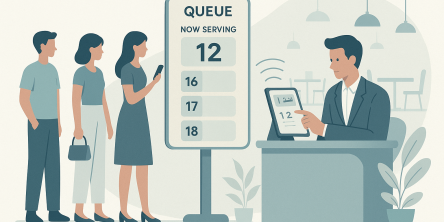Effective Cost Optimization Strategies with Azure FinOps

The broad spectrum of industries across the globe is under unprecedented pressure to optimize their operations. And maximize profits, of course. The rise of cloud computing, particularly platforms such as Microsoft Azure, has created incredible opportunities. Unfortunately, it has also made managing IT spending a tad complex. Businesses are always looking for ways to gain a competitive advantage after all. Effective resource allocation is critical to accomplishing that goal. Sans a clear understanding of where resources are allocated, businesses risk overspending. Furthermore, the decentralized nature of Azure adoption within organizations can result in fragmented spending patterns. This can make it even more difficult to gain a comprehensive understanding of the costs. So as Azure adoption grows, the value of FinOps practices tailored specifically for the platform has become more apparent.
In this blog, I will discuss some of the more important practices for cost optimization in Azure.
What is FinOps?
It is a rapidly growing discipline focused on managing the financial aspects of cloud computing. It's not just about cutting costs, but about maximizing the business value of cloud investments. Besides finance and operations teams, FinOps also includes engineering. Why? To help establish a collaborative approach to cloud cost management. FinOps in Azure is about empowering organizations to get the most out of their investments.
Cost Optimization in Azure With FinOps: Top Strategies to Keep in Mind
Optimizing Azure ROI requires efficient cloud cost management. FinOps ensures cost efficiency by bringing financial accountability to cloud spending. The best ways to reduce Azure expenses without sacrificing performance are examined in this post. Discover how to cut back on wasteful spending and match budgets with corporate objectives. Use these professional insights to unlock more intelligent cloud financial management.
- Real-time cost monitoring: It provides up-to-date information about your spending. This leads to the opportunity to track budget progress and respond quickly to unexpected cost increases. So, you will need to set up Azure Cost Management and Billing alerts for budget thresholds and specific resource cost increases. This will ensure that you are notified of potential issues as soon as they arise. Next up on the list are dashboards and visualizations to display cost data based on relevant dimensions.
- Right size resources: You must match your Azure resource capacity to your actual needs. You see, overprovisioning wastes money. And under provisioning takes a toll on performance. To deal with this, start with analyzing resource utilization for your virtual machines and other resources with Azure Monitor and other tools.
- Leverage reserved instances: RIs offer significant discounts on Azure services compared to pay as you go pricing. So, they make good choices for predictable workloads. Start with analyzing your resource usage patterns to identify workloads with long term resource requirements. Based on your anticipated usage, buy RIs for 1- or 3-year terms patterns. This will help you maximize potential savings. Then also factor in RI flexibility options that allow you to change the size or region of your RIs.
- Optimize storage: For this one, you will need to organize storage across Azure's storage tiers to store data based on its access frequency. I also recommend regularly deleting unused data. This goes a long way in reducing unnecessary storage consumption. Oh, and let us not forget about compressing data before storing it. Another nifty way to reduce storage capacity requirements.
- Automate cost governance: Configure Azure Budgets for various resource groups and services. Then implement Azure Policy to enforce cost related rules, such as limiting the types of resources that can be deployed. Automating resource shutdown through scripts or tools to shut down unused resources during non-business hours also reduces unnecessary costs.
- Use chargeback models: They are meant to allocate cloud costs to the teams or departments that use the resources. This entails establishing clear cost allocation policies based on resource ownership among other relevant metrics. Tagging resources with Azure Tags to categorize them by team or cost center facilitates more accurate cost attribution.
Final Words
By implementing these FinOps strategies, businesses can fully control their Azure cloud costs while maximizing value. A proactive approach to cost monitoring, right-sizing resources, leveraging reserved instances, and automating governance ensures financial accountability without compromising performance. As cloud adoption accelerates, a well-structured FinOps framework helps organizations optimize spending, improve predictability, and align cloud investments with business goals. Ultimately, mastering cost efficiency in Azure is not just about cutting expenses but driving innovative and strategic cloud decisions. If you need more help with cost optimization in Azure, it is always a good idea to engage the services of an expert.
Similar Articles
The modern age of customers expect constant availability, no matter what the offer. And for that, the market requires rapid innovation cycles. In such a high stakes environment, technology infrastructure is more than just a cost center.
When evidence seals fail, cases weaken. Explore how compromised chain of custody can derail investigations and jeopardize justice.
Compare hydraulic and traction residential elevators to find the best fit for your home. Learn how each system works, their pros and cons, space needs, energy use, and maintenance requirements.
Extend the lifespan of your commercial marina docks with proactive maintenance. Learn essential inspection routines, material-specific care, and safety tips to protect your investment and ensure long-term dock performance.
Learn the key factors in designing an engineered fall protection system. Discover how hierarchy of controls, task analysis, structural integrity, and fall clearance ensure safety and compliance.
Today, modern businesses face constant pressure to operate with maximum efficiency. This requires a technology infrastructure that is both agile and robust. However, the traditional model of on-premises data centers often has significant limitations. These legacy systems can drain valuable resources from teams.
When people are hungry, standing in line for a table feels tiring and unpleasant. In fact, research shows that most individuals will just walk away if they have to wait longer. They will go and find another place to eat.
In the early stages of designing new community centers, fire stations and administration buildings, city planners and architects are forced to make a crucial decision: What building material is best suited for providing the most value, safety and longevity to the public?
Amazon Simple Queue Service (SQS), Simple Notification Service (SNS), and EventBridge are just a few of the messaging services that AWS provides to meet various demands when it comes to creating scalable and effective cloud systems.









